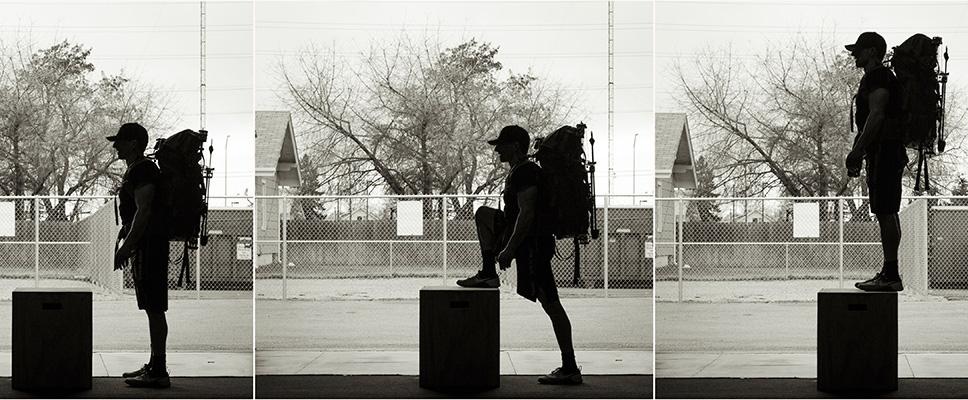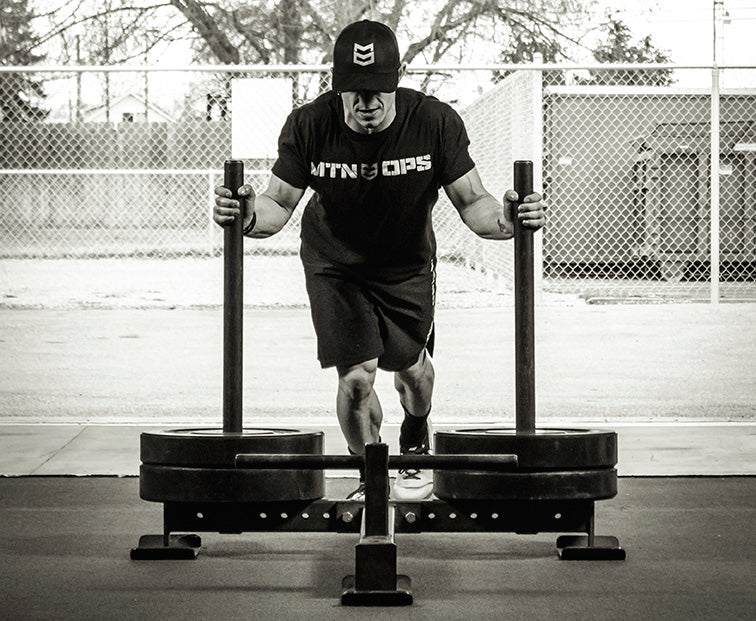
It is an exciting time of year! We all have a clear idea as to where we are hunting this fall and motivation is palpable. There is so much planning and preparing that needs to take place over the course of the next several weeks and months. If you are anything like me, you feel like a little kid waiting for Christmas — spending free time looking at equipment, testing new gear, cyber scouting on Google Earth, and combing hunting forums for nuggets of precious intelligence. Shooting your weapon should be a priority right now, and preparing physically needs to be considered as well.
In this article my goal is to share some of the interval training that I employ on my athletes and give you some options to choose from when preparing your body for demands of your upcoming hunting season.
The basic logic behind interval training is that it offers big dividends in a short amount of time. You’re giving up volume for intensity, or simply put — you’re exerting more effort in less time. Since all of us have to make sacrifices to train, this interval option bodes well, because you can literally suffer for a few minutes and make significant strides toward physical preparedness.
If I had a choice of running a 10k in 60 minutes or doing 20 minutes of interval work, I am going to choose the shorter, more intense option every time. Less is more when it comes to time economy and results. We’re all busy juggling a hectic schedule full of obligations, so squeeze in a few minutes and give this interval thing a shot. Here are some of the ways you can get started…

Running Repeats
Choose a distance of 400m, 800m, or one mile. For each interval of this distance, you should be running at a pace that is uncomfortable, but not so hard that you completely gas yourself on the first interval and cannot complete the circuit effectively. The goal is to keep the time consistent on each interval, with a bit of rest time between efforts. The number of sets or total repeats depends on your current conditioning. I recommend heading to your local track for a workout like this:
- 3×1 Mile Repeats. The work-to-rest ratio should be 1:1. So if you run a 10:00 mile, rest for the same duration, then resume to the next running interval. Remember to try and keep the time consistent over the course of 3 miles, but don’t make this too easy on yourself.
- 5x800m Repeats. Rest 3 minutes between sets. Each run is timed and all 5 splits should be within a few seconds.
- 8x400m Repeats. Each 400m run is more like a sprint. Rest twice as long as your split (1:2 work-to-rest ratio). If you can pull off a 90-second 400m run, then you get to rest 3:00 minutes before your next set.
Tabata Intervals
Tabata intervals are short and sweet and can be done in your living room. You will be working for 20-seconds and resting for 10-seconds (a work-to-rest ratio of 2:1). You will do this for 8 rounds or sets of a single movement. The goal is to be able to give it an all-out effort from set 1 through set 8, and hold that number of reps consistently. Your score is always your lowest rep count of that set.
A great workout would be to build a 4-movement tabata interval consisting of pull-ups, push-ups, sit-ups, and squats. This bodyweight workout ends up being 32 intervals of 20 seconds of work followed by ten seconds of rest, where the first 8 intervals are pull-ups, the second 8 are push-ups, the third 8 intervals are sit-ups, and finally, the last 8 intervals are squats. There is no rest between exercises. Record your lowest rep round per movement and that is your score.
You can choose different movements other than the 4 listed depending on your set-up at home or at the gym. If you can find a buddy to train with, I think you’ll push it a little harder, stay accountable, and have more fun.
Backpack Intervals
Training with your hunting backpack is incredibly important, and this can be performed in an interval method as well. The specificity of training with a loaded pack is a necessary evil. Load it up with some sand or salt and get to walking or hiking.
To use an interval method, consider what is known as “Fartlek” (Swedish for “Speed Play”) training. Fartlek is unstructured alternating efforts of fast, medium, and slow paces, which is exactly what we need as hunters. Mix up the efforts and terrain. To me, this is just like hunting big game. You never know when you need to hustle to a ridge to glass or cut-off a big herd bull. Do this with a group of friends and alternate leaders. There are benefits of pushing your body with friends through a chaotic and unpredictable workout.
Good luck to you all is you prepare for the 2016 season. I hope it is a memorable one. The hunt starts as soon as your begin to prepare. Enjoy the journey; it starts now.
Dan Staton is an avid bowhunter from Washington state. He owns CrossFit Spokane Valley and loves spending time in the outdoors with his family and friends. You can learn more by checking out ElkShape.com, @danthefitnessman on Instagram, or Youtube.com/ElkShape.
